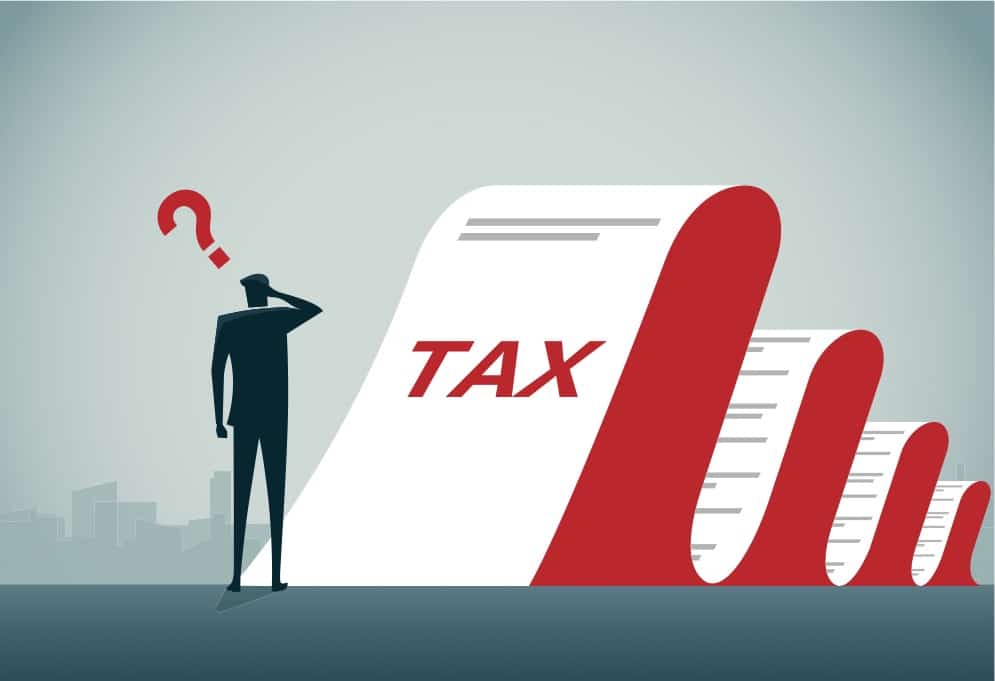Becoming a United States Resident: Renting Out Your Former Principal Residence
Canadians moving to the United States face the difficult decision of whether to sell their home before departing Canada, to leave it vacant for use as a secondary/vacation residence, or to rent it out. There are pros and cons to each of these choices, and each family’s situation is different. We will discuss the detailed administrative requirements and tax implications of selling your Canadian property in another article. Here we discuss the rental option.

Summary and Takeaways
Canadians living in the U.S. who rent their principle residence in Canada when they move to the U.S. are subject to rental income tax in both countries. That raises important questions. Should you avoid renting it, and just use it as a second home? Should you accept the tax consequences in order to capitalize on the potential for rental income revenue? These questions and many others are answered in this informative blog.
Key Takeaways
- U.S. credits for rental income taxes paid to Canada
- Canadian rules for withholding/remitting rental income
- What tax documents you need to file
- How to avoid having to file an NR6 form
- When filing an NR6 form is a good idea
- Deductions for rental-related expenses
- Deductions for rental property depreciation
- Tips for managing the rental property while you’re in the U.S.
- How short term, AirBnB-style rentals differ from longer term rentals in terms of taxation
- How to convert currency for accurate U.S. tax reporting
- Capital gains taxes when selling rental property
- Plus other important tax information
The great news is that with proper planning and expert guidance, taxes on a rental property in Canada can be minimized or completely eliminated, as this blog reveals.
If your soon-to-be former home is in a hot housing market, you may be tempted to hang on to it and sell it later when you think the top of the market is in sight. Or perhaps there is a possibility your stay in the U.S. may only last a few years, and you want to maintain the home in case you return to Canada. Renting out the home in the meantime can give you some cash flow to cover the costs of keeping and maintaining the property, but it also brings some headaches.
With a little cross-border tax planning you can minimize the pain.
It is important to find a property manager you trust to screen potential tenants and to monitor and maintain the property. You are about to become a nonresident of Canada. You need someone close by to keep an eye on the home and respond to midnight maintenance issues. When the time comes to sell the property, you need to know that sloppy tenants haven’t let the property deteriorate and that they will cooperate with showings.
While rental income is nice to have, it is reportable and taxable.
Which country gets to tax the rental income? Both, but you can use foreign tax credits to minimize, and usually eliminate, double taxation.
Taxed first in Canada
The country where the real property (land, timber, minerals, house, condo) is located gets first right of taxation on any income from the use or sale of that property. In this case, Canada gets first dibs on your Canadian home whether it is a rental or not. Taxes paid to Canada after you become a U.S. tax resident can be used as a credit against U.S. taxes on the same category of income.
What follows is a discussion of the Canadian and U.S. taxation of the long-term rental of a home. Short- term vacation rentals and Airbnb-style rental arrangements are probably classified as “doing business in Canada” and are subject to slightly different rules for reporting ongoing income, although the sale of the property is treated the same either way.
BIG QUESTIONS: What is the cost basis of my rental, and what happens to the Principal Residence Exemption?
Capital Gains – on the Canadian side:
Canada allows an exemption from taxation of the capital gain on the sale of a principal residence. The portion of the gain that is exempt is calculated by multiplying the gain by the number of years that the home was occupied as a principal residence PLUS ONE year, and then dividing by all the years of ownership. There is no dollar limit to the exemption. Because of the “plus one” provision, if you didn’t designate any other home as your principal residence during your period of ownership, you may still sell the home in the first two calendar years of U.S. residence and get a full Principal Residence Exemption on the Canadian side.
Technical note: the “plus one” provision is only available if you were a Canadian resident in the year that you acquired the home.
However, if you arrange to rent the home, you will have a deemed disposition from “change of use.” This will show on your Canadian exit return if the conversion was made before your departure. If the conversion is made after departure, the deemed disposition will be reportable on a nonresident T1 return in the year you place the rental in service. This crystallizes the exempt gain on your principal residence and resets the cost basis of the now-rental property to its fair market value at that date. This is called “stepping up” the basis of your assets.
Technical note: there is an election that can be made under ITA Section 45(2) to not have a deemed disposition apply. Discussion of this planning opportunity and the provisions for unwinding deemed dispositions should you reestablish Canadian residence are beyond the scope of this article.
Remember that your Canadian exit tax return is not due until April 30th of the year following your departure, so you have time to figure out if you are going to rent the home or just sell it before you lock in the tax filings. Once you decide to rent the home, start the NR6 procedures outlined later.
Capital Gains – on the U.S. side:
The principal residence exemption is limited to $250,000 ($500,000 for married couples), and you must have resided in the home as a principal residence for a minimum of 24 months in the five years prior to sale of the property. (Some exceptions may apply.) Any gain or loss on the sale of your home is converted to U.S. dollars using the exchange rates in effect on the date of sale and on the date of acquisition and improvements to the property. The gain calculated for U.S. purposes may be very different from the gain for Canadian purposes because of the fluctuation of the exchange rate over time.
If you are NOT a U.S. citizen at the time you become a U.S. resident, Article XIII, paragraph 6 of the Canada-U.S. Income Tax Treaty (the Treaty) will deem the adjusted cost basis of your Canadian principal residence for U.S. purposes to be no less than its fair market value on the date you become a U.S. tax resident. This step-up is not available for a U.S. citizen departing Canada. The Treaty step-up is only available for your principal residence.
When you convert your Canadian principal residence into a rental property, cost basis for U.S. depreciation purposes will be the lower of historical cost and the fair market value at the date the home is made available for rent. This is not a disposition unless coupled with an Article XIII (7) election, so there is no taxable gain or allowable loss, just a setting of the basis for depreciation.
Using the Income Tax Treaty to your advantage
There is no Canadian departure tax on Taxable Canadian Property – your home. Canada will take the tax when the property is sold, or deemed to be disposed, however many years in the future that might happen. The deemed disposition from change of use will crystallize your principal residence exemption. This can happen on your Canadian exit return if the decision to rent is made immediately. If you convert the property to a rental after you exit, you will want to do so within two calendar years to get the most value from your principal residence exemptions – both sides of the border. “Change of use” is a deemed sale for tax purposes. The gain is realized and technically taxed by Canada, but the tax could be zero due to the principal residence exemption
Article XIII (7) of the Treaty allows taxpayers subject to a deemed disposition in Canada, regardless of citizenship, to step up the adjusted cost basis of the home by electing to be treated the same on the U.S. side. You are treated for U.S. purposes as having sold the home and immediately reacquired it at fair market value, just the same as what happened on the Canadian side. This election is even available for the U.S. citizen owning rental property in Canada. Some U.S. tax may result if the gain is greater than your U.S. principal residence exemption.
How is the nonresident’s Canadian ongoing rental income calculated and taxed?
No NR6 Filing
In the absence of any planning, your Canadian tenant or property manager will be responsible for withholding 25% of the gross rents and promptly remitting it to the Receiver General for Canada. They would forward the remaining 75% of the gross rent to you. You are done. No further filing with Canada is required unless you want to file the Canadian S.216 tax return to report the income, deduct the allowable expenses, and receive a refund of excess withholdings. First determine if the 25% withheld is more than the tax calculated on net income, and then decide if you want to file the return. If you think this is the plan for you, be aware that few tenants and not all property managers are willing to take on the responsibility of withholding and remitting taxes to the Receiver General and issuing you an NR4 at the end of the year.
Filing Under S.216 with an NR6 in place
With proper planning, you will only pay income tax to Canada on the net income from your rental. You may deduct all normal and reasonable expenses of operating a rental property. Those expenses would include property management fees, professional fees, insurance, property taxes, mortgage interest if applicable, repairs and maintenance, utilities if you are providing them, and the cost of securing a tenant, including commissions paid to a realtor. The income and expenses are reported on an accrual basis. Income is reported when earned, not when received, so long as the ultimate collection of that rent is not in doubt.
For Canadian purposes, you may also deduct Capital Cost Allowance (CCA), which is the tax deduction for recouping your original investment in depreciable property, i.e., buildings and fixtures, not land. CCA is calculated on a declining balance basis and cannot be used to create or increase a loss. Claiming CCA is optional on the Canadian return but should generally be claimed by the U.S. resident owner as we will explain later.
After all these expenses AND CCA, sometimes there is little or no taxable rental income left for Canada to tax.
How do you get to this better Canadian cash flow result?
First you need a Canadian resident withholding agent. Hopefully the property management company will agree to serve in this capacity.
You and your property manager will do up a budget for the upcoming rental year that shows projected gross rental income and expenses other than CCA. You file form NR6 “Undertaking to File an Income Tax Return by a Nonresident Receiving Rent from Real or Immovable Property” before the first month that the property is rented and then annually before the end of the calendar year. Once this is accepted by the CRA, your Canadian resident withholding agent is required to withhold and remit 25% of the net rental income before CCA.
The withholding agent issues you an NR4 at the end of the year, reporting the gross rental income and the taxes that have been withheld and remitted to the CRA on your behalf.
You will file a Canadian income tax return electing under Section 216 of the Income Tax Act to report the actual rental income and expenses and to take any allowable CCA. Ordinarily, you will receive a small refund if you claim CCA since the taxes that were withheld were based on all the anticipated expenses except CCA.
How is my Canadian rental income taxed in the United States?
As a U.S. resident for tax purposes, you will report and pay income tax on your worldwide income. That includes foreign rental income. You will then be able to take a foreign tax credit for taxes paid to Canada on your rental. That foreign tax credit cannot exceed the portion of your U.S. income tax, not including Net Investment Income Tax (NIIT), that is attributable to foreign passive income.
Some U.S. states also allow you a foreign tax credit for your Canadian tax liability. Arizona allows you to use the same taxes that you used on the Federal return – effectively using it twice, once to offset federal tax and once to offset Arizona tax. Other states, such as California, do not allow a foreign tax credit at all.
For U.S. purposes, net income from a rental property is calculated on a cash basis. Last month’s rent collected in advance is taxable in the year it is collected. However, a security deposit is only income when the tenant forfeits it. The U.S. allows you to deduct the same rental expenses as Canada, only on a cash basis (when paid).
Don’t forget to convert your Canadian rental income and expenses to U.S. dollars for your U.S. tax reporting. For monthly income and expenses, use the average exchange rate for the year. For capital purchases and improvements, you are required to use the spot rate on the date of acquisition.
Depreciation vs Capital Cost Allowance
The major difference between the Canadian and U.S. schemes for calculating net residential rental income is that Canada has a Capital Cost Allowance deduction that is optional. The U.S. allows a deduction for depreciation that you are not forced to take but that you should.
When a property is sold for more than its original cost less depreciation, the U.S. depreciation that was allowed or allowable will be taken back into taxable income. Whether or not you took the depreciation on your U.S. tax returns, it will be added to your income when you sell the property.
While Canadian Capital Cost Allowance (CCA) is calculated on a declining balance basis, U.S. depreciation on the building itself (not the fixtures or land) is essentially straight-line over 30 years. This is not the same rate used for U.S. domestic rental property. This is the recovery (depreciation) period for Foreign Residential Rental Property (Code section 168(g)). You don’t take CCA or depreciation on the land portion of a rental.
Depreciation may turn your net rental income into a loss for tax purposes. There are limits on how much of a rental loss you may deduct from other income. These limits depend on your income from other sources and filing status. Any loss not deductible in a particular taxation year is suspended until a year with sufficient net rental income or allowed in full in the year the property is disposed of.
Taking CCA on the Canadian side will roughly match the U.S. side tax outcome, leading to less of a timing mismatch of foreign tax credits.
What if the value of the home continues to rise after my home becomes a rental property?
When you sell the property, first Canada will tax the gain over and above what has already been claimed on Canadian tax returns, i.e., the increase in value since your deemed disposition on change of use. You will also recapture any CCA you have deducted. If you have a Section 45(2) election in place, no CCA will have been allowed, and you will use the principal residence formula. Sorry, but once you are a nonresident of Canada, you can’t go back and elect out of the change of use deemed disposition to pull the whole income under Canada’s principal residence exemption.
The U.S. will then tax the gain subject to U.S. rules and currency conversions. The U.S. will also tax the recaptured depreciation to the extent it was previously deductible. You will be able to take a foreign tax credit in the U.S. for taxes paid to Canada – not to exceed the U.S. tax on foreign passive income.
The scenarios discussed in this article may not mirror your particular facts and circumstances, but we hope it gave you a good understanding of the basic principles as they stand in 2022. Cross-border tax planning is complicated and needs to be done taking into consideration your specific situation and wishes. For more information on this and other cross-border tax planning challenges, reach out to the cross-border professionals at Cardinal Point Wealth Management and Cardinal Point Capital Management.



